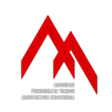Perspektif terhadap Kawasan Bersejarah: Kategori Pengunjung berdasarkan Korelasi antara Daya Tarik dan Harapan terhadap Kawasan Braga
DOI:
https://doi.org/10.21776/ub.ruas.2019.017.01.3Keywords:
appreciative, heritage, perspective, recreativeAbstract
The Braga area is one of the cultural heritage tourist destinations in Bandung with the attraction of its colonial architecture. The emergence of new buildings in the region is presented without giving attention to the surrounding colonial buildings. The visitor’s perspective on the Braga area is an important basis in regional growth and development. This study aims to find the perspective of visitors based on the correlation between their attraction and expectations of the Braga region. The method used in this study was mixed methods (qualitative-quantitative), and data collection was carried out using a survey through a freely distributed online questionnaire (snowball non-random sampling). The collected data is then analyzed qualitatively using content analysis and quantitatively using principal component analysis, factor analysis, and multivariate correlation analysis. The results of the study revealed the existence of two perspectives, namely appreciative and recreational. The appreciative perspective sees Braga as having an attractive heritage of historical buildings and hopes that Braga will become a conservation area. While the recreational perspective regards Braga as an entertainment area that is unique and hopes for the commodification of the Braga area.
References
Atmojo, A. (2001). Persepsi Pengunjung terhadap Kualitas Pelayanan pada Museum Mulawarman Tenggarong. Jurusan Pariwisata Politeknik Negeri Samarinda.
Bryant, F. B., & Yarnold, P. R. (2001). Principal-Components Analysis and Exploratory and Confirmatory Factor Analysis. In L. G. Grimm, & P. R. Yarnold, Understanding Multivariate Statistics (pp. 99-136). Woshington: American Psychological Association.
CIRT. (2018, December). Grand Canyon University, Center for Innovation in Research and Teaching. Retrieved from Center for Innovation in Research and Teaching: https://cirt.gcu.edu/research/developmentresources/research_ready/mixed_methods/choosing_design
Fandeli, C. (2001). Dasar-Dasar Manajemen Kepariwisataan Alam. Yogyakarta: Liberty.
Ismayanti. (2010). Pengantar Pariwisata. Jakarta: Grasindo.
Kusuma, H. E. (2009). Memilih Metode Analisis Kuantitatif untuk Penelitian Arsitektur. Seminar Nasional Metodologi Penelitian Arsitektur. Semarang: Magister Teknik Arsitektur Universitas Diponegoro .
Licht, M. H. (2001). Multiple Regression and Correlation. In L. G. Grimm, & P. R. Yarnold, Reading and Understanding Multivariate Statistics (pp. 19-64). Washington: American Psychological Association.
Maryani, E. (1991). Pengantar Geografi Pariwisata. Bandung: Jurusan Pendidikan Geografi FPIPS IKIP.
Nieamah, K. (2014). Persepsi Wisatawan Mancanegara terhadap Fasilitas dan Pelayanan di Candi Prambanan. Jurnal Nasional Parwisata, 39-45.
Santoni. (2014). Transformasi dan Tipologi Bangunan Indo-Europeeschen Architectuur Stijl Kawasan Braga Bandung. E-Journal Graduate Unpar, 162-177.
Spillane, J. (1994). Pariwisata Indonesia, Siasat Ekonomi dan Rekayasa Kebudayaan. Yogyakarta: Kanisius.
Sudaryanti, I. J., Sukriah, E., & Rosita. (2015). Analisis Faktor-Faktor yang Mempengaruhi Motivasi Wisatawan dalam Melakukan Wisata Heritage di Kawasan Braga Kota Bandung. Jurnal Manajemen Resort & Leisure, 43-56.
Suyitno. (2001). Perencanaan Wisata. Yogyakarta: Kanisius.
Yoeti, A. O. (1996). Pengantar Ilmu Pariwisata. Bandung: Angkasa.
Downloads
Published
How to Cite
Issue
Section
License
Authors who publish with this journal agree to the following terms:
- Authors retain copyright and grant the journal right of first publication with the work simultaneously licensed under a Creative Commons Attribution License that allows others to share the work with an acknowledgement of the work's authorship and initial publication in this journal.
- Authors are able to enter into separate, additional contractual arrangements for the non-exclusive distribution of the journal's published version of the work (e.g., post it to an institutional repository or publish it in a book), with an acknowledgement of its initial publication in this journal.
- Authors are permitted and encouraged to post their work online (e.g., in institutional repositories or on their website) prior to and during the submission process, as it can lead to productive exchanges, as well as earlier and greater citation of published work (See The Effect of Open Access).












